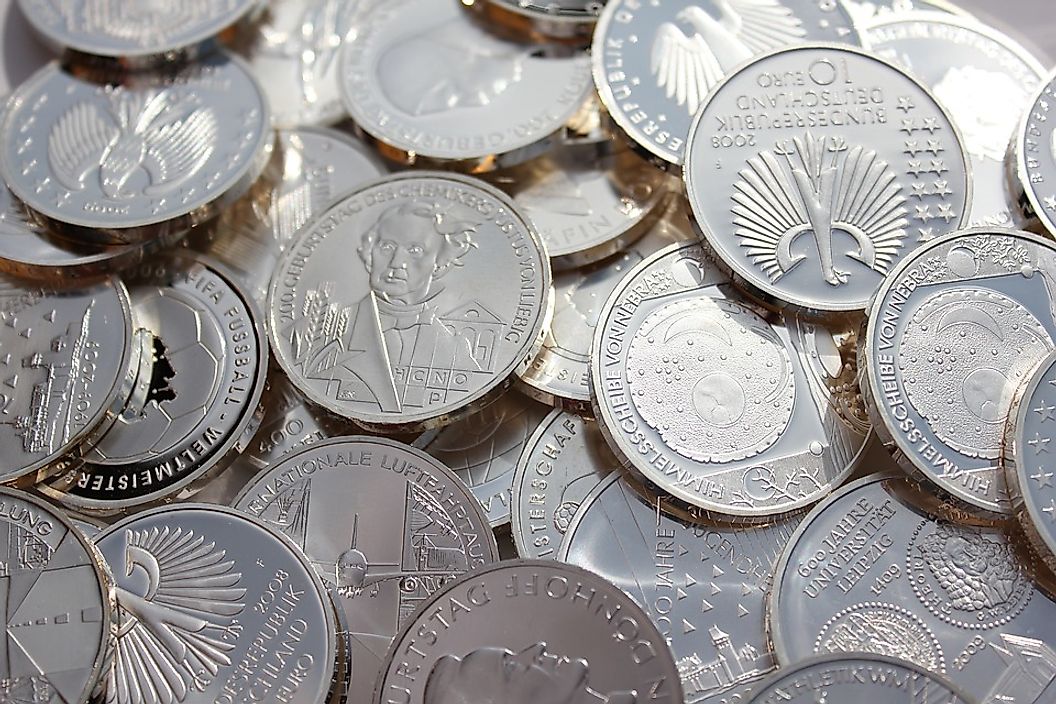The World's Leading Silver Producing Countries

Silver has a chemical formula (Ag), and it appears with white metallic luster. Its value stems from its ability to resist the corrosive effects of oxygen and moisture, and its ability to reflect light and appear white. Silver in nature comes in a combined form, usually with lead or copper. Any ore containing silver, the element is always a minor constituent of the ore typically silver might be 0.085%. All ores containing silver are mined either by open bit or the underground method then they are crushed and grounded to begin the extraction process. The method employed depend on the primary metal in the ore, whether it is lead, Zinc or copper.
The World's Leading Silver Producing Countries
Mexico
Mexico has remained the world‘s largest producer, and it has maintained that lead for some years now. In 2013, the country produced 5,400 tons of silver. Fresnillo Company from Mexico is the world's leading producers of silver, though it also mines gold in other parts of the country. Goldcorp is another silver producing company and owns Panasquito mine which is primarily a gold mine and silver come as a byproduct.
China
China is the second largest producer of silver and in 2002, it was the fourth biggest producer of silver in the world and its production has been increasing over the years. In 2013, its total production was 4,000 tons. The Chinese have developed other mining operations in the country, and that is the reason for its steady increase over time. 95% of the silver produced in China is a result of other mining projects, and therefore it is a byproduct.
Peru
Peru is the world’s third largest producer of silver and in 2013 it produced 3,500 tons. The country has the biggest deposits of silver in the world. The deposits are enormous, and the country could quickly move up the rankings in the future. Much of copper come from Antamina mine, though it is primarily a copper mine.
Russia and Australia
Russia and Australia both produced 1,700 tons of silver in 2013, and therefore both occupied the fourth position. Australia has a long mining history. BHP Billiton is the largest corporation doing mining in Australia having started its operations in the 1920s. BHP Billiton is a multinational company doing mining in other countries. Queensland produces more silver in Australia more than any other territory.Russia’s silver reserve is unknown but has always remained in the top ten largest producers of silver.
Other Leading Producers
Bolivia (1,200 tons), Chile (1,200 tons), Poland (1,150 tons), US (1,090 tons), and Canada (720 tons), are the other major producers of silver in the world.
Applications Of Silver
In the past silver was used as currency, but more recently it has been used to make coins. For instance sterling, silver is an alloy having 92.5% silver, while the rest is some other metals. Silver is also used to make jewelry, silverware, and other decorative items to enhance their aesthetic appeal. Silver has applications in making high capacity batteries, where it is used with zinc or cadmium. Since it has the best properties to reflect light, it is used to male mirrors, though it can tarnish over time. Silver has other numerous applications which include silver paints where it is used to make printed circuits, electrical contacts, dental alloys, solder and brazing alloys among others.In the history of photography, silver bromide and silver iodide were used because they sensitive to light. With the coming of the digital photography, silver still plays an important role, where silver salts are used to produce high-quality images and protect it from illegal copying. The photochromic lenses work on similar principles, darkening under bright light and becoming more transparent in low light.
The World's Leading Silver Producing Countries
| Rank | Country | Silver Production (in tonnes), 2013 |
|---|---|---|
| 1 | Mexico | 5,400 |
| 2 | China | 4,000 |
| 3 | Peru | 3,500 |
| 4 | Russia | 1,700 |
| 5 | Australia | 1,700 |
| 6 | Bolivia | 1,200 |
| 7 | Chile | 1,200 |
| 8 | Poland | 1,150 |
| 9 | United States | 1,090 |
| 10 | Canada | 720 |







